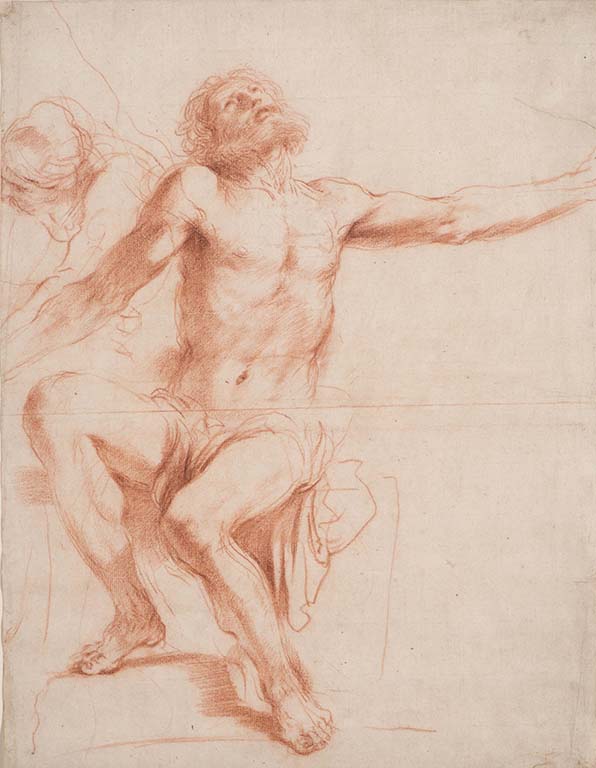.jpg)
MARCH 5–MAY 29, 2017
THE BODY: STUDY AND MOTION
Giovanni Francesco Barbieri (known as Guercino) (Italian, 1591–1666)
Seated Male Figure, c. 1618–19
Red chalk on paper
2003.9.12
Drawing the body is a fundamental aspect of artistic learning, serving since the Renaissance as one the first steps in an artist’s education. Artists in the Netherlands and Italy could approach the depiction of the body in different ways because of their respective traditions or training. Yet whether representing the body as naturalistic or idealized, depicting single-figure studies or complex compositions, artists in the north and south faced similar concerns—how to represent the body with anatomical correctness when drawing from the nude or from the imagination; how to depict the body in motion; and how to handle light and shadow. These demands led to such innovations as the creation of the first drawing manuals in Italy at the turn of the seventeenth century and the practice of studying the human body from life as well as from antique sculpture. Preparatory studies, in turn, paved the way for more complete compositions, providing a glimpse into artists’ thought processes in creating finished prints, paintings, or sculpture.

